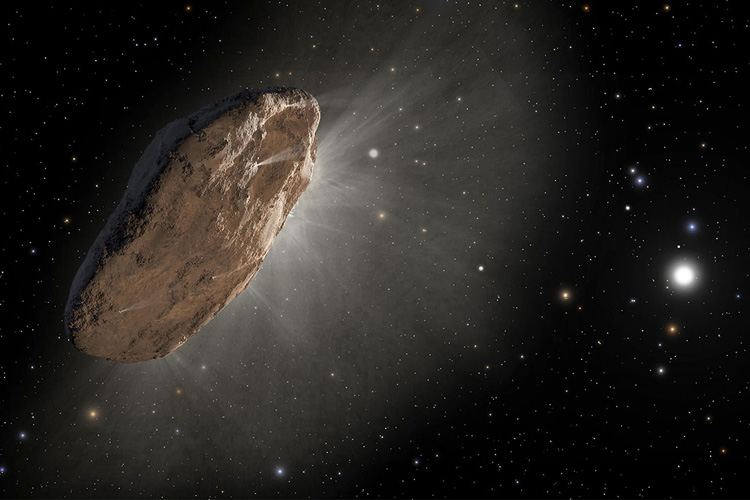Humans have been fascinated by space and the possibility of extraterrestrial life for centuries. Since the launch of Sputnik 1 in 1957, numerous space missions have been sent to explore our solar system and beyond. The search for alien life has been a primary motivation for space exploration, with efforts made to detect signs of life on other planets and moons.
While the search for extraterrestrial life has yet to yield definitive proof, it remains a fascinating and important area of research.
OUMUAMUA:

Oumuamua, the first confirmed object from another star to visit our solar system, is a rocky, cigar-shaped interstellar interloper with a reddish hue. It is about 400 meters long, highly elongated, and has an aspect ratio greater than any asteroid or comet observed in our solar system. Its unusual shape could provide new insights into the formation of other solar systems.
The University of Hawaii’s Pan-STARRS1 telescope, funded by NASA’s NEOO Program, discovered this first interstellar object to visit our solar system, 1I/2017 U1 ‘Oumuamua, on October 19, 2017. Initially classified as a comet, observations revealed no cometary activity after it passed the Sun at an incredible speed. It was then classified as an asteroid until further measurements indicated it behaved more like a comet.
How It got Its name:
The International Astronomical Union (IAU) gave the first interstellar object the technical name 1I/2017 U1. However, the team from the University of Hawaii’s Pan-STARRS program that discovered it also gave it a more unique name, ‘Oumuamua, which means “a messenger from afar arriving first” in Hawaiian.
OBSERVATIONS:
Observations of the interstellar object 1I/2017 U1 ‘Oumuamua suggest that it had been traveling unattached to any star system through the Milky Way for hundreds of millions of years before encountering our solar system.
This provides the first direct evidence of such interstellar objects, which scientists have theorized about for decades. Thomas Zurbuchen, associate administrator for NASA’s Science Mission Directorate, called it a groundbreaking discovery in November 2017.
The Very Large Telescope in Chile and other telescopes worldwide were used to quickly measure the orbit, brightness, and colour of the interstellar object 1I/2017 U1 ‘Oumuamua after its discovery. Astronomers, lead by Karen Meech of the Institute for Astronomy in Hawaii, collated photos from several telescopes to establish that the object varies in brightness by a factor of 10 as it rotates every 7.3 hours.
Its high elongation and brightness variations are unlike any known asteroid or comet from our solar system. The most elongated objects previously observed were no more than three times longer than their width.
Karen Meech reported that the object’s significant brightness variation implies an elongated shape, about ten times longer than its width, with a convoluted structure. Meech also confirmed that the object’s reddish hue is like that of outer solar system objects and observed that it is entirely inactive, with no trace of dust.
Possible Origin and Future Path
Preliminary calculations suggest that ‘Oumuamua came from the general direction of the bright star Vega, but it took so long to travel to our solar system that Vega was not in that position 300,000 years ago. The object has since passed Mars and will pass Jupiter in May 2018 before leaving our solar system for the constellation Pegasus in January 2019.
Astronomers estimate that similar interstellar objects pass through our inner solar system about once per year, but they are difficult to detect without powerful survey telescopes like Pan-STARRS1.
Conclusion:
Astronomers now have the thrilling chance to examine an item that came from outside our solar system thanks to the discovery of the ‘Oumuamua interstellar object. It stood out from every other known asteroid or comet in our solar system due to its peculiar shape, elongation, and brightness variation.
Despite the fact that ‘Oumuamua has since departed the solar system and is no longer visible, its discovery has provided new opportunities for study of extrasolar planets and the potential for extraterrestrial life. There is a good chance that more interstellar objects may be discovered as technology develops and telescopes become more potent, giving us more information about the secrets of our universe.
